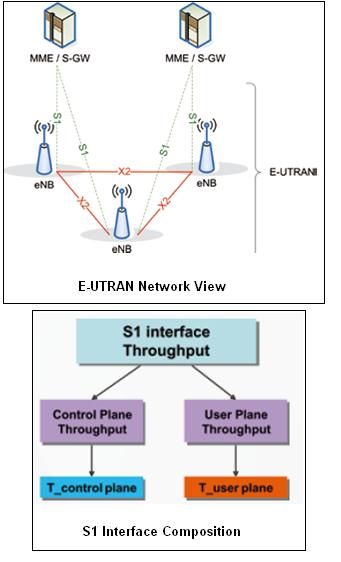The figure below denotes the location of the X2 and S1 link with respect to the other network components within the LTE network.
 In general, the traffic on S1 interface is divided into two different plane, the control plane, which uses SCTP (Stream Control Transmission Protocol) developed by IETF for the purpose of transporting various signaling protocols over IP network, and the user plane, where GPRS tunneling protocol for user plane (GTPU) is adopted as the tunneling method.
In general, the traffic on S1 interface is divided into two different plane, the control plane, which uses SCTP (Stream Control Transmission Protocol) developed by IETF for the purpose of transporting various signaling protocols over IP network, and the user plane, where GPRS tunneling protocol for user plane (GTPU) is adopted as the tunneling method.
X2 Bandwidth Dimensioning Procedure
X2 is the interface between eNodeBs and the bandwidth requirement is very complex. However in realistic network implementation, it is most likely that there will not be any direct connection between eNodeBs. Instead, the X2 data will be combined with the S1 data and transport back to aggregators residing in the switching centre before being rerouted to their target eNodeB.
Main X2 dimensioning factors that need to be considered (in eRan2.0 and 2.1) include:
- The frequency of handover between eNodeBs
- The duration time of handover
- The overlapping nature between eNodeBs
- Hysteresis setting at cell level
- Average service rate and packet size per handover
- Signaling overhead in control plane of X2 interface
The throughput on X2 is negligible compared to that on S1. Similar to the S1 control plane throughput calculation, the throughput of X2 is estimated to be 3% of the throughput on S1 in order to simplify the dimensioning process.
Impact of Latency of X2 on Cell Throughput
If infinite HARQ process is allowed (as a theoretical study), excessive delay in S1 or X2 routing will definitely affect the service quality and user performance of higher layer applications. Even in normal networks, routing delay may be inherent in Operator’s non cellular core data network and this will create impact on throughput although it is not as severe as in infinite HAQR.